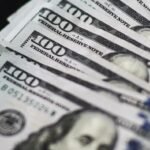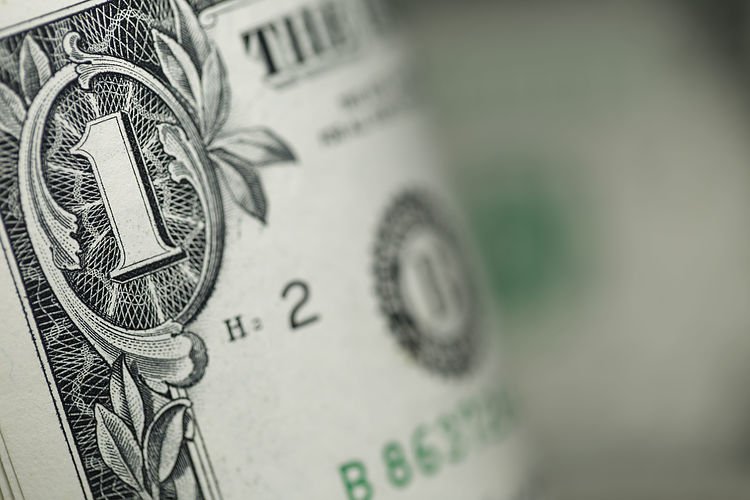- The US Dollar eases as the Euro’s recovery weighs on the Greenback.
- Surprisingly upbeat PMI data from France, Germany and the Eurozone trigger substantial strength in the Euro.
- The US Dollar Index eases and snaps below 106.00.
The US Dollar (USD) eases on Tuesday as the Euro rallies across the board. The move came on the back of a triple whammy in Eurozone data, with the preliminary Services component in the Purchasing Managers Index (PMI) for Germany, France and the Eurozone beating estimates and even climbing above 50, which means that the sector is no longer in contraction. This positive news for the Eurozone triggered an ample amount of Euro-strength and dragged the Dollar Index (DXY) lower, as the Euro conforms to 57.6% of the basket’s weight.
On the economic data front, the S&P Global Purchasing Managers Index (PMI) data for the US will be released on Tuesday, which will likely be another market-moving event for the Greenback. Traders will want to see if this US Dollar exceptionalism, mainly driven by the strength of the US economy, is still ongoing and is not yet slowing down.
Daily digest market movers: Confirming higher
- The EU is weighing sanctions on firms that are shipping weapons and materials to Russia.
- Preliminary French HCOB Services PMI picked up to 50.5 in April from 48.3. German HCOB Services PMI soared to 53.3 in the same month from 50.1 in March. This pushed EUR/USD up to 1.0695, despite all other segments in the PMI lagging or being still in contraction in both France and Germany.
- Eurozone data showed that HCOB Services PMI rose to 52.9 in April from 51.5 in March, well above the expected increase to 51.8.
- The weekly US Redbook Index for the week ending April 19 is set to be released at 12:55 GMT. The previous number was 4.9% for the week ending April 12.
- At 13:45 GMT, some fireworks are expected from the US preliminary S&P Global PMI data:
- The Services component is expected to head to 52 in April from 51.7.
- The Manufacturing number is expected to tick up to 52 from 51.9 in March.
- The Composite Index was at 52.1 in March, with no forecast available for the current month.
- At 14:00 GMT, New Home Sales are expected to rise to 0.668 million in March from 0.662 million in February.
- In addition to the Home Sales data, the Richmond US Federal Reserve (Fed) Manufacturing Index for April will be released as well. Expectations are for a small increase to -7 from -11.
- The US Treasury is allocating new bonds in the market at 17:00 GMT. This one will bear a 2-year maturity.
- In the commodity space, both Oil and Gas futures are falling as tensions in the Middle East ease.
- Equity markets are in the green, though mildly. An outlier needs to be reported: the Hong Kong Hang Seng is down 0.70%.
- According to the CME Group’s FedWatch Tool, expectations are further cementing that the Fed will keep its monetary policy unchanged in June, with a small 15% chance for an interest rate cut in that meeting. An initial interest rate cut from the Fed is now foreseen for September.
- The benchmark 10-year US Treasury Note trades around 4.62%, a touch softer for this week.
US Dollar Index Technical Analysis: PMI will end consolidation
The US Dollar Index (DXY) is facing some retreat due to renewed Euro strength. The Euro accounts for 57.6% of the DXY Index composition and is thus the main driver for the index’s moves. With the US PMI data being released later in the day, markets will be able to compare the European against the American performance. Positive data could drive the US Dollar stronger and send the DXY Index back above 106.00 as traders could reassure the US is still outperforming the Eurozone.
On the upside, the high of April 16 at 106.52 is the level to beat. Further up and above the 107.00 round level, the DXY Index could meet resistance at 107.35, the October 3 high.
On the downside, the first important level is 105.88, a pivotal level since March 2023 (acting as a resistance at that moment and working as a support in November). Further down, 105.12 and 104.60 should also act as support ahead of the 55-day and the 200-day Simple Moving Averages (SMAs) at 104.17 and 103.91, respectively.
Risk sentiment FAQs
In the world of financial jargon the two widely used terms “risk-on” and “risk off” refer to the level of risk that investors are willing to stomach during the period referenced. In a “risk-on” market, investors are optimistic about the future and more willing to buy risky assets. In a “risk-off” market investors start to ‘play it safe’ because they are worried about the future, and therefore buy less risky assets that are more certain of bringing a return, even if it is relatively modest.
Typically, during periods of “risk-on”, stock markets will rise, most commodities – except Gold – will also gain in value, since they benefit from a positive growth outlook. The currencies of nations that are heavy commodity exporters strengthen because of increased demand, and Cryptocurrencies rise. In a “risk-off” market, Bonds go up – especially major government Bonds – Gold shines, and safe-haven currencies such as the Japanese Yen, Swiss Franc and US Dollar all benefit.
The Australian Dollar (AUD), the Canadian Dollar (CAD), the New Zealand Dollar (NZD) and minor FX like the Ruble (RUB) and the South African Rand (ZAR), all tend to rise in markets that are “risk-on”. This is because the economies of these currencies are heavily reliant on commodity exports for growth, and commodities tend to rise in price during risk-on periods. This is because investors foresee greater demand for raw materials in the future due to heightened economic activity.
The major currencies that tend to rise during periods of “risk-off” are the US Dollar (USD), the Japanese Yen (JPY) and the Swiss Franc (CHF). The US Dollar, because it is the world’s reserve currency, and because in times of crisis investors buy US government debt, which is seen as safe because the largest economy in the world is unlikely to default. The Yen, from increased demand for Japanese government bonds, because a high proportion are held by domestic investors who are unlikely to dump them – even in a crisis. The Swiss Franc, because strict Swiss banking laws offer investors enhanced capital protection.

























